Art Secret 2031 Multi Head Brush Bristle Art Brushes Small Sizes Economy
A Painter's Guide to Brush Shapes
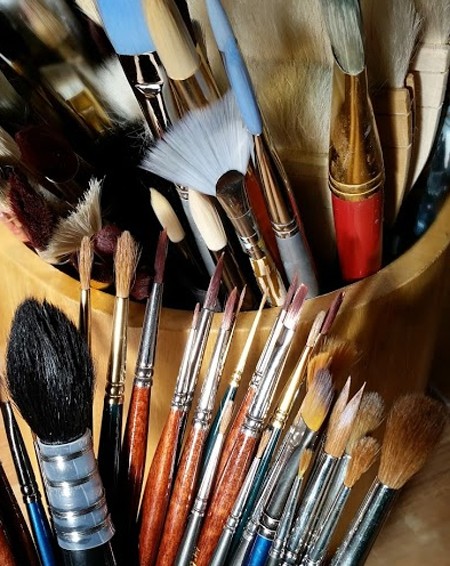
For several centuries, brushes could only be circular due to their construction being based on the quill of a feather. Yet, one time metallic ferrules were introduced in the 19th century, brushes could be produced in diverse shapes, nigh notably, the flat and the filbert. The Impressionists embraced this new development in castor making and turned the art world on its head with the new mark-making options that the new shapes offered.
Today, there are many different shapes – some more necessary than others – but the round, apartment and filbert remain the most essential types.
Round brushes
Inquire people to describe an artist's paint castor and most will probably draw a round brush – a slender handle with a fat, circular head tapering to a fine bespeak.

A sable round brush

A hog bristle round brush
Part of the reason for this is that, for several centuries, brush-making applied science was based on the quill and, in using a tube as the starting point of the structure, Round brushes were all that could be produced. Even today, with a whole host of castor shapes bachelor, the round is the one that y'all're likely to be given as a kid in your first pigment set and the brush type that will be supplied with more avant-garde sets.

A round can be used in a number of ways such as to fill, to depict, to employ washes, to spot on small amounts of colour from the tip or produce a sparse line for detail and varying thick to sparse marks by cartoon the castor away from the surface.
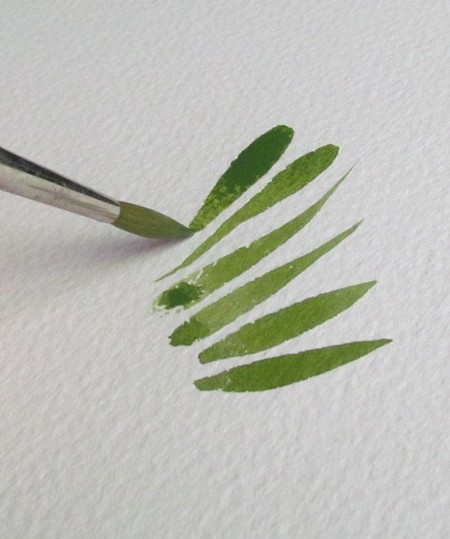
Varying force per unit area on the castor head produces tapered marks

H2o-carrying properties of a Sable Brush
As well useful for filling in larger areas.
Flat brushes
A Flat Brush has a row of hair clamped apartment in the ferrule and trimmed foursquare across the tiptop edge to create a rectangular brush head.

A long apartment hog brush

A short apartment constructed brush
There are two-types of apartment brush – a long flat with quite long hair protruding from the ferrule and a short flat, otherwise known as a bright, which has shorter hair. The long flat carries more pigment and, because of the longer pilus, has flexibility for more than flourished marks.
The bright, with its shorter hair, is more suited to 'dabbing' marks such as used by the Impressionists, offers more control for detail and tin withstand beingness 'scrubbed' into the surface.
At that place are two things to note about flats. One is that in that location are no standard castor sizes then i manufacturer'southward long flat may be very similar to another'southward short flat and the other is that the 'Short' and 'Long' title in no style refers to the length of the handle – information technology just describes the castor head.
When choosing a flat, look at the brush caput and compare the width of the brush to the length of pilus to enable yous to guess whether the range suits your style of painting.
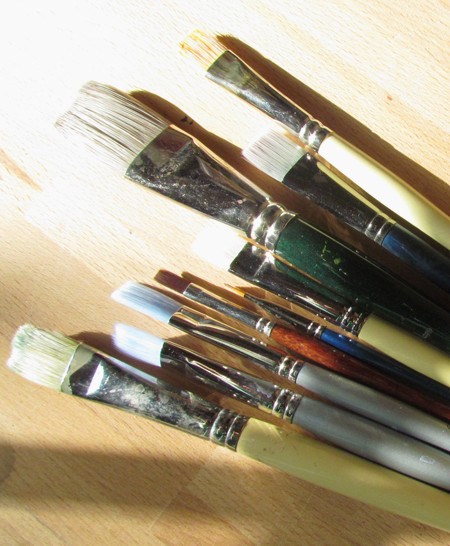
Filbert brushes
A Filbert is a flat brush with the hair rounded into an oval at the tip. It is probably the nigh versatile of the brush shapes and a staple of oil and acrylic painting.

A filbert castor with constructed fibres
The filbert gets its name from its supposed resemblance to the nut of the filbert tree – a type of hazlenut – which in plow gets its name from Saint Philibert on whose feast day the ripening of the nut coincides. Withal, based on shape, I think a more fitting title should have been 'tombstone'.

The main brush stroke produced is wide but with a soft, subtle top line allowing marks to instantly blend with previously laid down marks. Turned on its side, it tin can produce a sparse line or, when swivelled in mid stroke, gives a tapered line. Its versatility makes it a very popular shape and most artists working in oil or acrylic volition certainly take a number of filberts – if non just the ane essential one – in their brush collection.
Fan brushes
As can be expected, this castor is in the shape of an open fan and used for blending and making marks to resemble leaf in landscapes.

Dabbed marks with a fan tin can propose leafage, fur, waves or clouds …
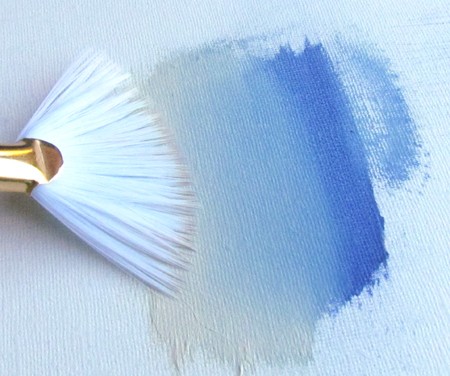
… but is especially useful to alloy colours or to smooth castor strokes.
Rigger brushes
A circular with far longer pilus than a standard round for painting fine lines. The longer hair allows the hand to hold the brush nearer the brush head for improve command and absorbs any paw shake as the brush is steadily moved across the surface.
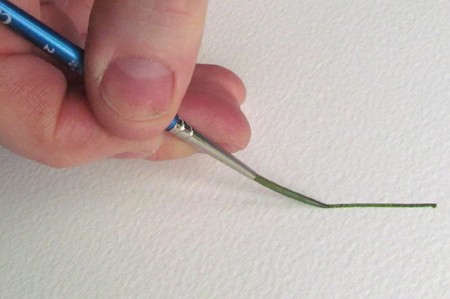
Perfect for fine linework
Spotter brushes
A circular where the hair has been clamped in the ferrule around the belly of the brush caput to shorten the hair for a more controllable mark due to its flexibility existence express.

Next to the marks of a round brush, it is possible to run into the very fine detail a spotter or miniature tin achieve.
Angled flat brushes
A apartment where the pilus or fibres have been cut at an angle across the top border to paint lines and edges particularly vertical lines.
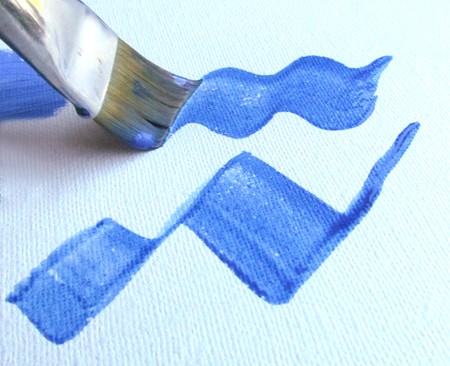
The angled flat can produce thick and thin marks rather similar a calligraphy nib.
Deerfoot brushes
This is a circular that appears to have been cut in one-half at a slight camber and can be used to stipple to effect foliage or simply to give texture.

The stippled marks of the deerfoot brush create a textural await.
Comb brushes
Name given to whatsoever type of castor that has varying lengths of hair so that tufts of hair protruding from the others make repeated footling marks to produce the look of leafage or fur. Combs are available every bit flats, filberts or fans – every bit above.
This apartment comb demonstrates how the small marks that the protruding tufts make gives the impression of fur.
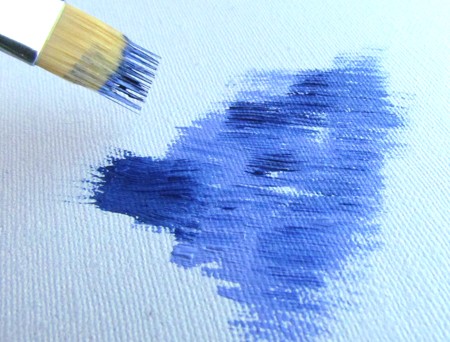
The rummage produces many pocket-sized marks in 1 stroke.
0 Response to "Art Secret 2031 Multi Head Brush Bristle Art Brushes Small Sizes Economy"
Postar um comentário